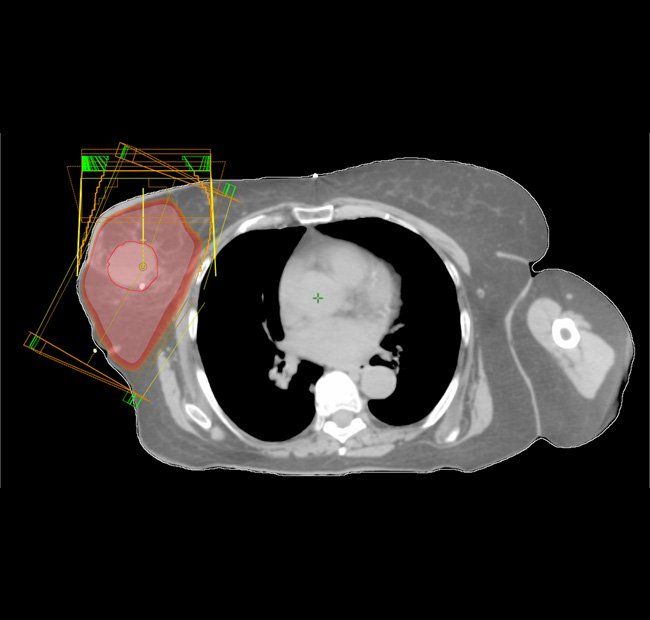Nomogram Could Guide Use of Radiation in Breast Cancer
Researchers have developed a nomogram to help calculate which breast cancer patients may be appropriate candidates for accelerated partial breast irradiation.
A nomogram could help calculate which breast cancer patients may be appropriate candidates for accelerated partial breast irradiation.

Researchers have developed an easy-to-use nomogram that can help to calculate which patients with early-stage breast cancer may be appropriate candidates for accelerated partial breast irradiation.
Jessica Wobb, MD, of the Beaumont Cancer Institute at Oakland University William Beaumont School of Medicine in Royal Oak, Michigan, presented the results of a study (Abstract 59) used to develop the nomogram at the 2014 American Society of Clinical Oncology (ASCO) Breast Cancer Symposium.
“We have formulated a practical, easy-to-use nomogram for calculating local-regional failure in patients undergoing accelerated partial breast irradiation,” Wobb said. “This offers a potential guide for patients at low risk for locoregional recurrence and could also aid in determining appropriate candidates for off-protocol utilization of accelerated partial breast irradiation.”
According to Wobb, breast-conserving therapy consisting of lumpectomy and radiotherapy is the standard of care for early-stage breast cancer. Accelerated partial breast irradiation is considered one of the methods for delivering radiotherapy in appropriately selected patients.
The American Society for Radiation Oncology (ASTRO) published a consensus statement in 2009 that listed the characteristics of “suitable” patients for accelerated partial breast irradiation. However, Wobb said that questions remain as to whether guidelines stratify patients by their risk for local failure.
Therefore, Wobb and her colleagues developed a nomogram that takes into account clinicopathologic features that helps predict risk for locoregional recurrence in patients undergoing accelerated partial breast irradiation.
Their analysis included a cohort of 2,000 cases gathered from the ASBrS MammoSite Registry Trial and William Beaumont Hospital. Out of 2,000 cases identified, 1,573 cases had complete data and were used for the analysis.
The median follow-up was 5.5 years and the median age of patients was 65 years. The rate of locoregional failure was 4% for the entire cohort of patients.
The researchers conducted a univariate analysis and found several factors linked with locoregional recurrence, including age less than 50 years (P = .05), pre- or perimenopausal status (P = .02), close or positive margins (P = .04), estrogen receptor (ER) negativity (P < .001), and high tumor grade (P = .002). The researchers then created a multivariate model and two factors remained clinically significant: ER status (hazard ratio [HR] = 2.8; P = .0004) and high tumor grade (HR = 1.9; P = .04).
“ER negativity and high grade were both significant factors that were associated with locoregional failure, but grade is not currently taken into consideration with the current ASTRO consensus guidelines,” Wobb said. “Although age, menopausal status, and margins did not meet clinical significance, these were added to the model as they improved the overall fit of the model.”
From these data the researchers created a nomogram with each characteristic assigned a certain point value. The total score determined the overall risk for locoregional recurrence. Age less than 50 years was weighted to 30 points, non-menopausal status was weighted to 49 points, close or positive margin status was weighted to 60 points, negative ER status-the most important of the predictors-was weighted to 100 points, and high tumor grade was weighted to about 70 points. These points were totaled to give patients a combined score for their risk for locoregional recurrence.
“Until the long-term results of the NSABP [National Surgical Adjuvant Breast and Bowel Project] Protocol B-39 study are available, this nomogram offers a unique tool in guiding breast oncologists to determine appropriate candidates for accelerated partial breast irradiation in an off-protocol setting,” Wobb said.